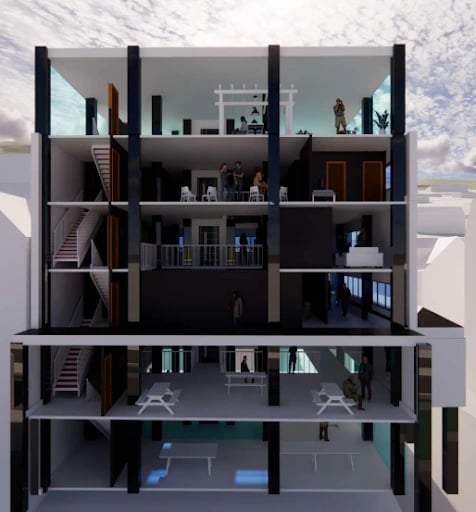Aurora Skyscraper
/2023
A shimmering triangulated exoskin channels wind through micro-turbines and houses nano-PV glass, enabling the seventy-eight-storey tower to export energy. Stacked sky lobbies with indoor gardens punctuate vertical circulation, creating social oases and parceling the mixed-income, hotel, and commercial programmes into distinct yet interconnected neighbourhoods.
Project Gallery

Timescales
The central concrete core ascended on a rigorous five-day floor cycle, achieving structural top-out at level 78 in just 22 months.
A self-climbing façade gantry trailed roughly ten floors behind the core, allowing interior trades to closely chase the concrete pour with MEP rough-ins.
Each sky-lobby garden was managed as a standalone mini-project with fast-tracked permits, accelerating phased tenant occupancy certifications.
Objectives
Export surplus renewable power generated by integrated nano-PV glass and façade-mounted micro-turbines, effectively operating the tower as a net-positive vertical city.
Vertically mix income-tiered housing stacked above a mid-tower hotel, and monetise a dramatic sky-bridge observatory to subsidise building operations.
Leverage faceted exoskin geometry to simultaneously maximise PV yield and diffuse wind loads, reducing structural demands and façade maintenance.
Materials
A high-strength concrete core, coupled with multi-storey steel outriggers, braces a perimeter megacolumn grid for lateral stability.
Triple-glazed vacuum units embed orientation-tuned nano-PV films, and floor slabs employ corrosion-resistant basalt-fibre rebar to lower embodied carbon.
High-speed elevators use regenerative drives that feed electricity back into the tower’s micro-grid during descent, boosting overall efficiency.
Challenges
Excessive wind-induced accelerations demanded installation of a 300-tonne water mass damper within the crown to maintain occupant comfort.
Steeply raked façade angles necessitated drone-based cleaning systems, and revised fire-testing protocols added late-stage cavity barrier retrofits.
Tropical ambient temperatures required ice-slurry concrete pumping to maintain hydration temperatures during structural pours at 360-metre elevation.